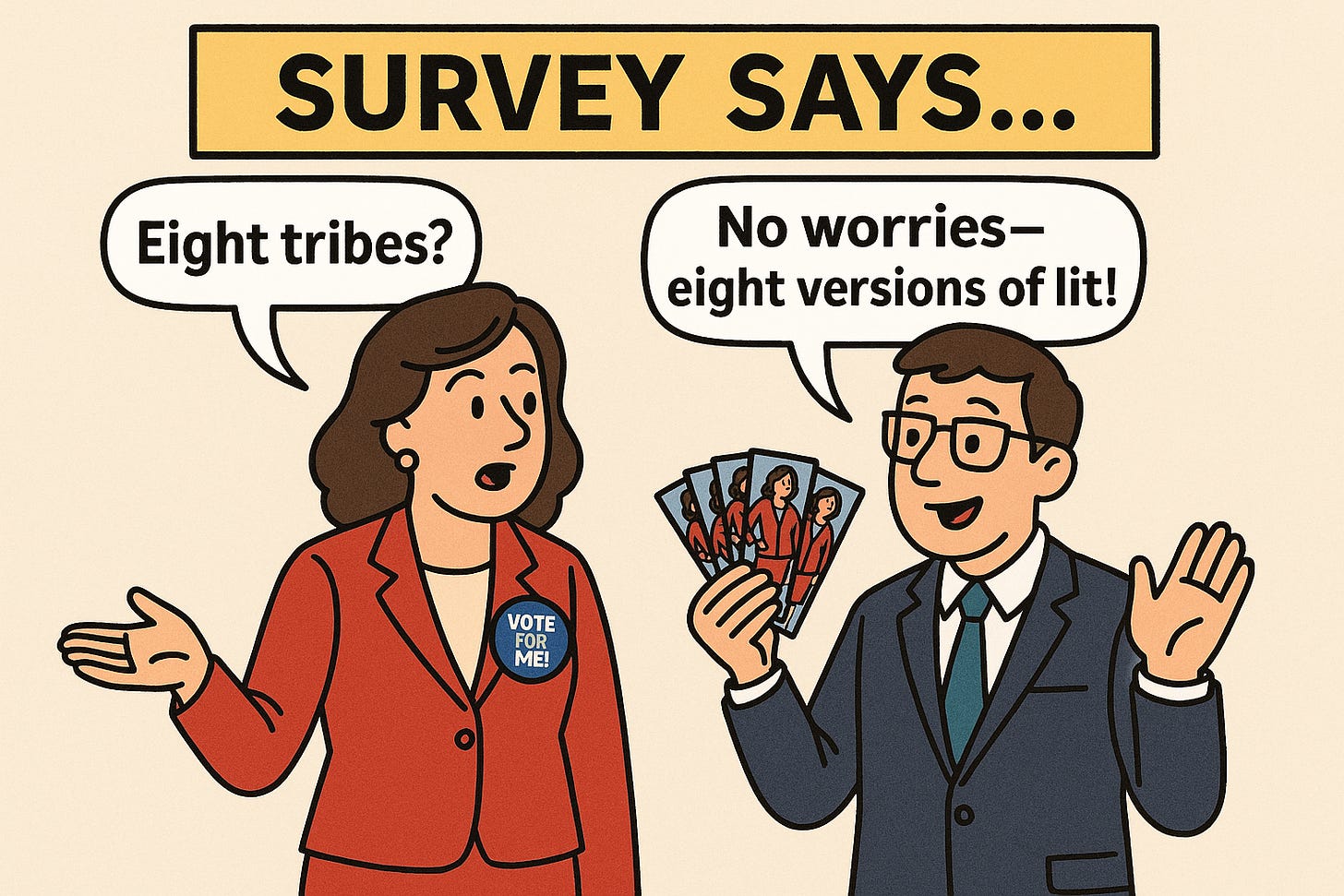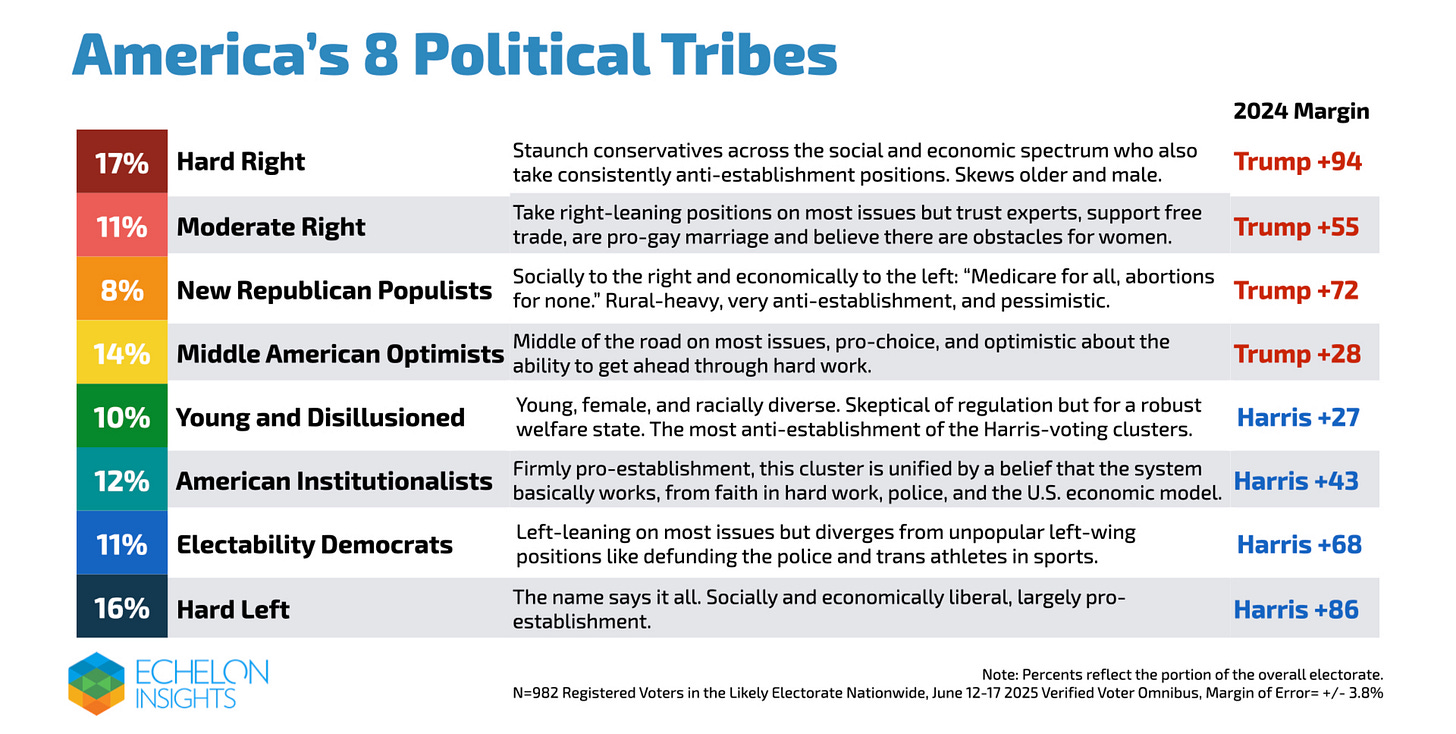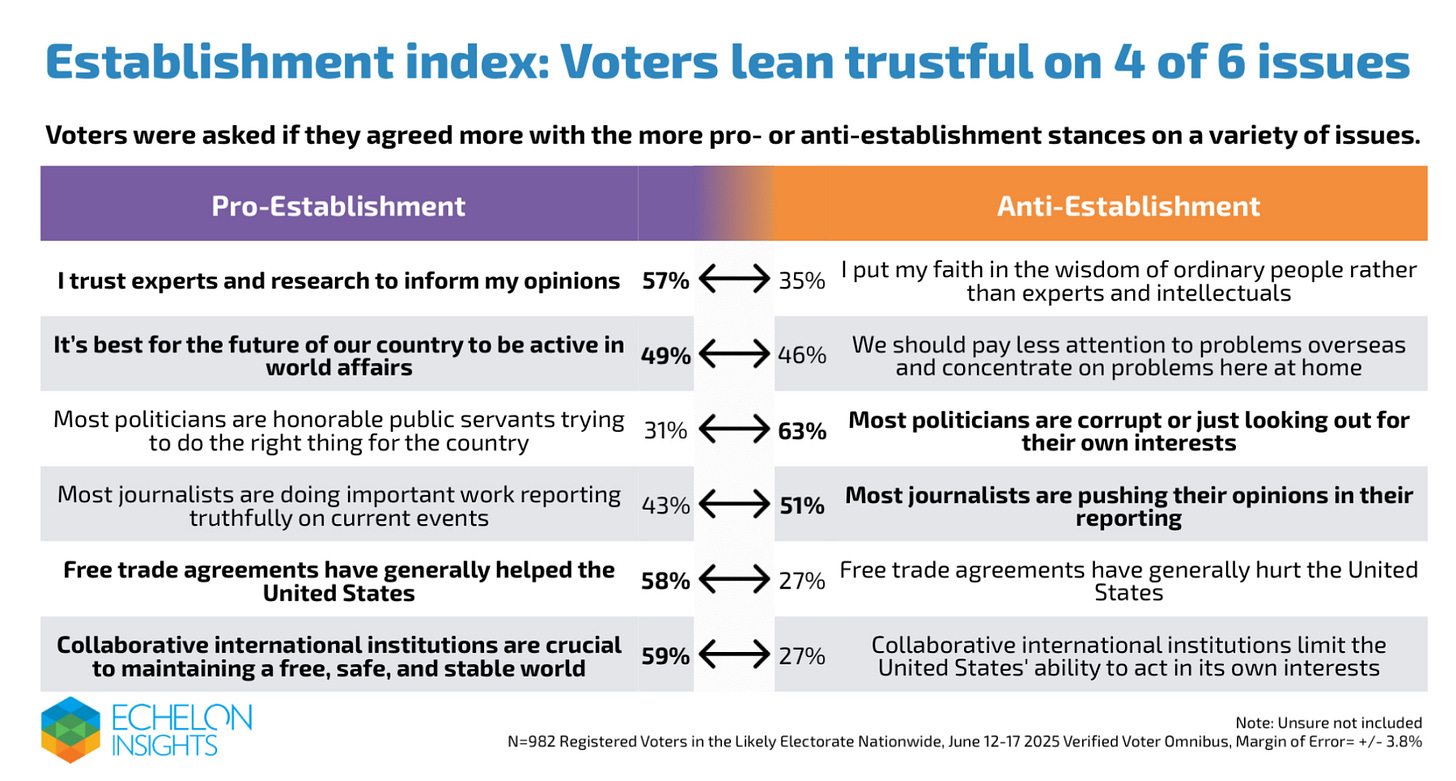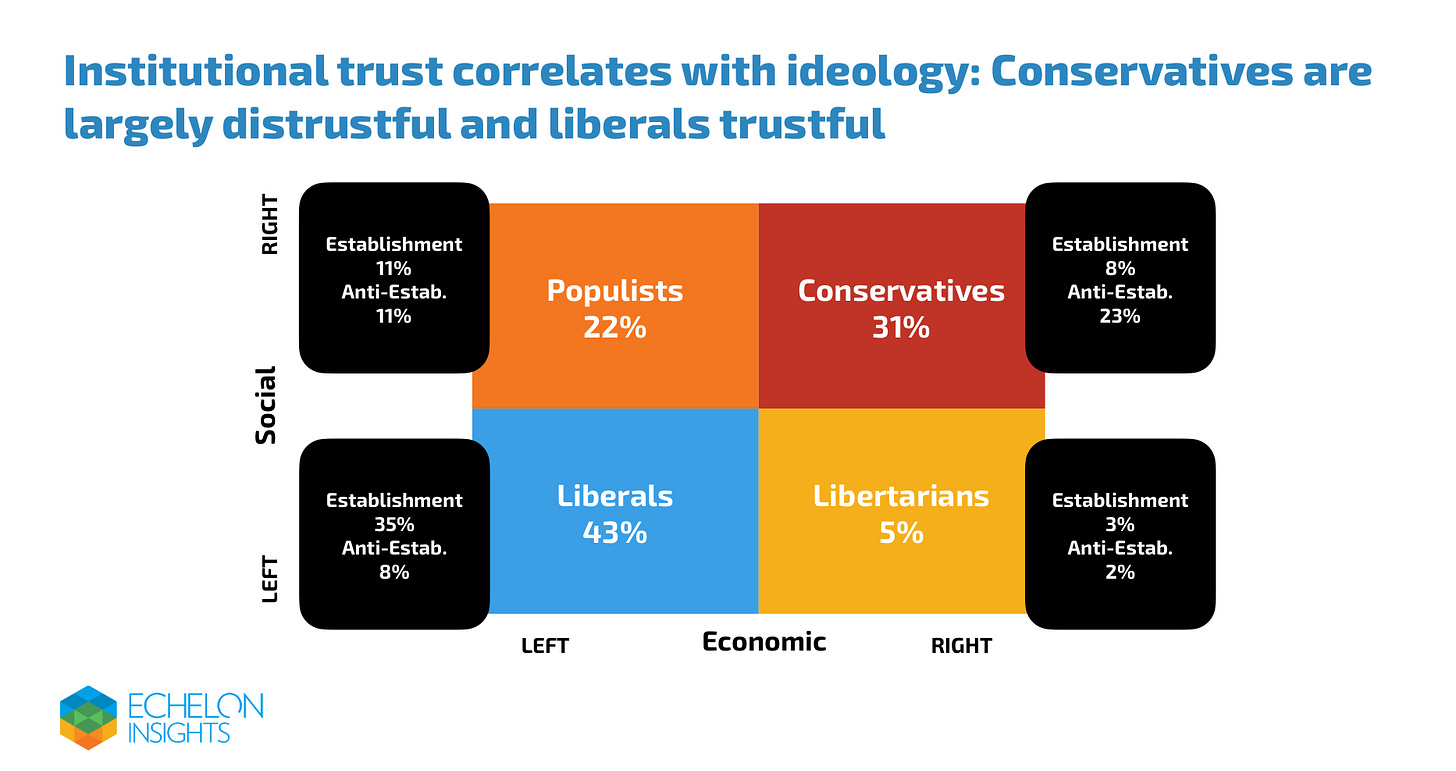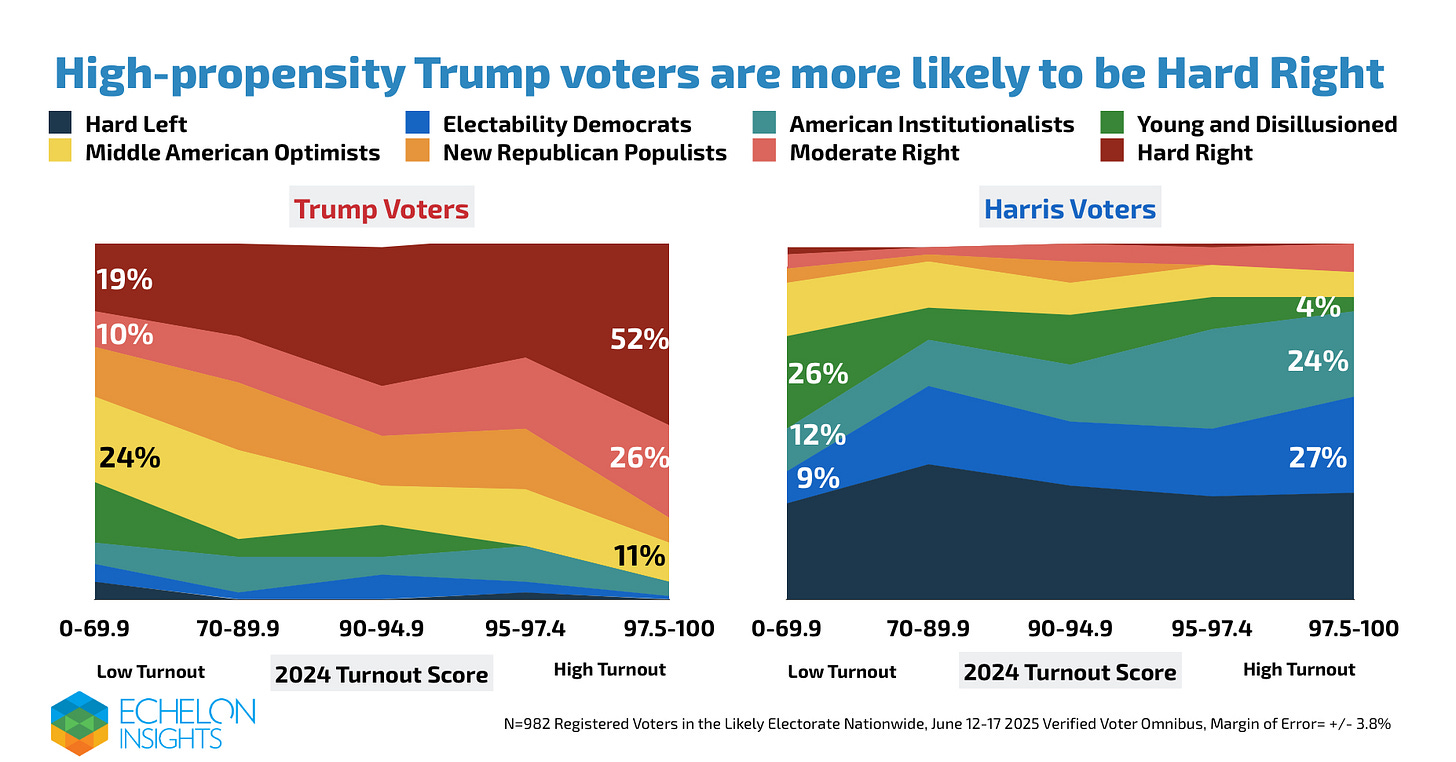Survey Says: The Electorate Unraveled—Eight Tribes Reshaping Politics
Echelon Insights’ June survey of 1,000 likely voters uncovers eight political tribes shaped by social, economic, and trust divides, offering a new playbook for campaigns.
This column departs from my usual focus on California politics and policy. I found Echelon Insights’ survey exceptionally compelling upon exploration. Full disclosure: Patrick Ruffini, a founding partner of Echelon Insights, is a longtime friend from our Blog Con/Right Online days, which adds a personal connection to this analysis. Also, beg my forgiveness as this kind of stuff is not easy to write about.
A New Lens on Voters
Echelon Insights surveyed 1,000 likely voters in mid‑June. The analysis adds an anti‑establishment dimension to traditional social and economic axes, clustering respondents into eight official political tribes:
Hard Right
Moderate Right
New Republican Populists
Middle American Optimists
Staunch Progressives
Liberal Patriots
Electability Democrats (American Institutionalists)
Disillusioned and Diverse
Forget the old left-right split—this framework shows how messy voter beliefs are. Campaigns that understand how social values, economics, and trust intersect can connect across tribal lines. I strongly recommend that you take a little time and really study this chart before going on
The Tribal Mix
The survey pegs the Hard Right at about 16–17% of voters, with Staunch Progressives making up a similar but slightly smaller share per publicly available top lines. Most Americans actually fall into more centrist or mixed tribes—like Middle American Optimists, Moderate Right, or Electability Democrats—groups that blend cultural conservatism, economic pragmatism, and varying trust in institutions.
Here’s a striking example: majorities lean conservative on immigration, while abortion attitudes skew more liberal. Messaging efforts must navigate this ideological overlap.
Trust Sets the Tone
Tribal alignment on trust varies sharply:
New Republican Populists and Disillusioned and Diverse voters score lowest on trust in institutions, reflecting anti‑establishment skepticism.
In contrast, groups like Electability Democrats and American Institutionalists maintain strong confidence in expertise and governance.
This divide helps explain why a mainstream Republican and a populist challenger may speak past each other. Candidates can leverage trust themes—local control for skeptics or experience for institutionalists—to build targeted appeal.
Cultural Swings
Views on culture are far from monolithic. While many still lean conservative on political correctness and immigration, Staunch Progressives and even parts of Middle American Optimists support abortion rights and gay marriage. Immigration attitudes appear to have shifted somewhat leftward since 2024, perhaps a response to the high profile immigration raids in June? That nuance matters for crafting effective appeals.
The Partisan Play - Hard Liners Dominate Primaries
Within high-propensity primary voters, the picture sharpens even more. Hard Right voters make up the largest share of the GOP primary electorate, while Staunch Progressives dominate the Democratic side. These two tribes are the most ideologically consistent and the most likely to turn out in primaries, giving them outsized influence on candidate selection compared to their share of the general electorate. Meanwhile, tribes like Moderate Right, Middle American Optimists, and Disillusioned and Diverse often sit out primaries or split their votes, meaning that candidates appealing only to base voters risk alienating large swaths of persuadable Americans in November.
So, Does It Matter?
Echelon’s eight tribes reveal an electorate that is anything but simple. Candidates can’t rely solely on party loyalty—they must decode the distinct priorities and trust dynamics of each tribe. Shared concerns like economic unease or institutional distrust transcend partisan boundaries, offering fertile ground for coalition-building ahead of 2026.
I’m curious to see how campaigns in 2026 and beyond use this survey to shape their messages—and whether they can really bridge these divides.
Those who want to see more of this survey which I strongly encourage, including charts (great charts!) and detailed data, can check it out on the Echelon Insights website page on their 2025 Tribes Survey.
OK, now ONE VIDEO. I found out about this Tribes survey, and decided to write after watching Chris Cillizza (Indy journalist, former CNN/WPost) interview Eschelon pollster Kristen Soltis Anderson about the survey. So interesting.



